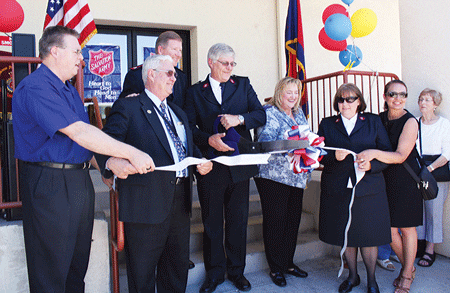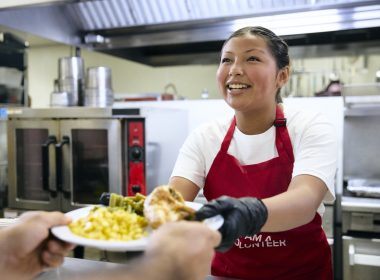
Shelter’s four phases are complete, thanks to community help.
By Syndey Fong
The Salvation Army in Lodi, Calif., held a ribbon-cutting ceremony on June 20 for its Hope Harbor Emergency Shelter, celebrating the facility’s completion with the official opening of three new units for single parents.
“In the past, we were just able to help adult men and women [with the shelter program],” said Captain Dan Williams, Lodi corps officer. “We were getting three to four phone calls a week asking if we had something for single parents. Now if you’re a father with a child or mother with a child, we can assist with your needs.”
The new single parent family program allows participants to stay at the shelter for up to 56 days per calendar year. The family units were constructed in what used to be the Hope Harbor shelter warehouse.
“We had these new units in mind five years ago,” Williams said. “But we really needed to finish up some other shelter projects before taking on the new units.”
The Salvation Army raised $380,000 for the final phase of the shelter project: $194,000 from the city of Lodi Community Development Block Grant Funding, $118,000 from the public, $33,000 from Meehleis Modular, and $25,000 from the Michael David Foundation.
“It takes a community to get this done and Lodi is a special community,” said Lodi Mayor Joanne Mounce. “The Lodi City Council and the city are pleased to have played a small part in it. I’m glad we came together to do this.”
In addition to the new units, this final phase of the shelter program includes a classroom for the shelter’s culinary program and a workout room for program participants and staff.
“We didn’t have the best setting to host the culinary arts program,” Williams said. “This new room does that. And we also wanted to have a gym so our participants and staff will be helped spiritually, mentally and now, physically.”
Originally built in 2003, the shelter expanded over the years to include 20 beds for homeless men, 28 beds for homeless women, 16 beds for a transitional living center and a culinary arts program.










